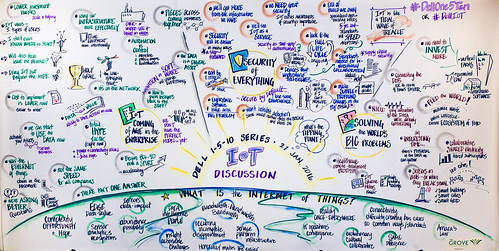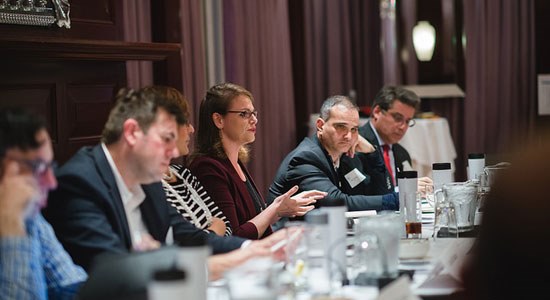Analysts, media, thought leaders and implementers convened in San Francisco last week for the fifth Dell 1-5-10 Series discussion on the Internet of Things (IoT). This ongoing series brings together diverse perspectives to discuss the opportunities and challenges of key technologies and how they could evolve over a one year, five year, and ten year period.
We talked about security. Usually, this topic turns dark quickly…with commentary around the growing attack surface of IoT and the different ways compromises can occur. This all came up, of course, but the idea that IoT could be an enabling function for security was a fresh and enlightening discussion.
“Connectivity can make you more agile in addressing threats,” said Rob Enderle from the Enderle Group. “The isolated network is not secure.”
Greg Petroff, Customer Experience Officer at GE, agreed, saying, “With our customers, they’re far more vulnerable with their current infrastructure than the one we propose. And if they’ll let us, we’ll show them vulnerabilities.” Joseph A. di Paolantonio of DataArchon shared that security will evolve for two-way accountability. “We’ll learn whether or not to trust another thing.”
Di Paolantonio also shared his IoT analytics predictions here on Direct2Dell last week.
We also explored how (or if) IoT is developing in the enterprise space. Enderle brought out some of the roadblocks. “No one has fleshed out solutions,” Enderle said. “But we’re going fast doing the part we like.” John Furrier of SiliconANGLE chimed in that with all these devices and IoT project, “no one really knows what we’re doing with data.”
The practitioners in the group shared that IoT projects are absolutely developing in the enterprise space. They’re just hidden in the engineering offices and manufacturing floors of the world. Greg shared that at GE, “there is a confluence that has allowed us to scale. With the advent of cloud infrastructure, sensors and connectivity, we can use the data. When we turn on the data, customers can get actionable intelligence. People are seeing how to utilize assets more successfully – with that you’re going to generate revenue/efficiency. Hype is hype, but there will be use cases in next 12 months that show people value.”
Nino DiCosmo of Tridium said that “scale is helping drive the definition we’re looking for.” A key takeaway from the group is that enterprise IoT needs a breakout success story – something that will elevate this topic for business decision makers in order for this set of technologies to grow in scale and opportunity.
Our final topic was around how IoT could address the biggest problems in our world. Healthcare came up immediately with a wide range of ideas. Thought leader Clarise Z. Doval Santos shared the example where Kaiser is deploying IoT glucose meters to monitor diabetes.
“They are working on integrating it, so they’ll get data from Jawbones, Fitbits, etc.," she noted. "People will join this bandwagon when they see the quality rating of a hospital is high as a result.”
How do you think IoT will play out in the enterprise? How will security evolve over time? And how can the Internet of Things help alleviate the key issues that face our planet? Share your thoughts on Twitter and LinkedIn and read other perspectives on CIO.com and SiliconANGLE.



